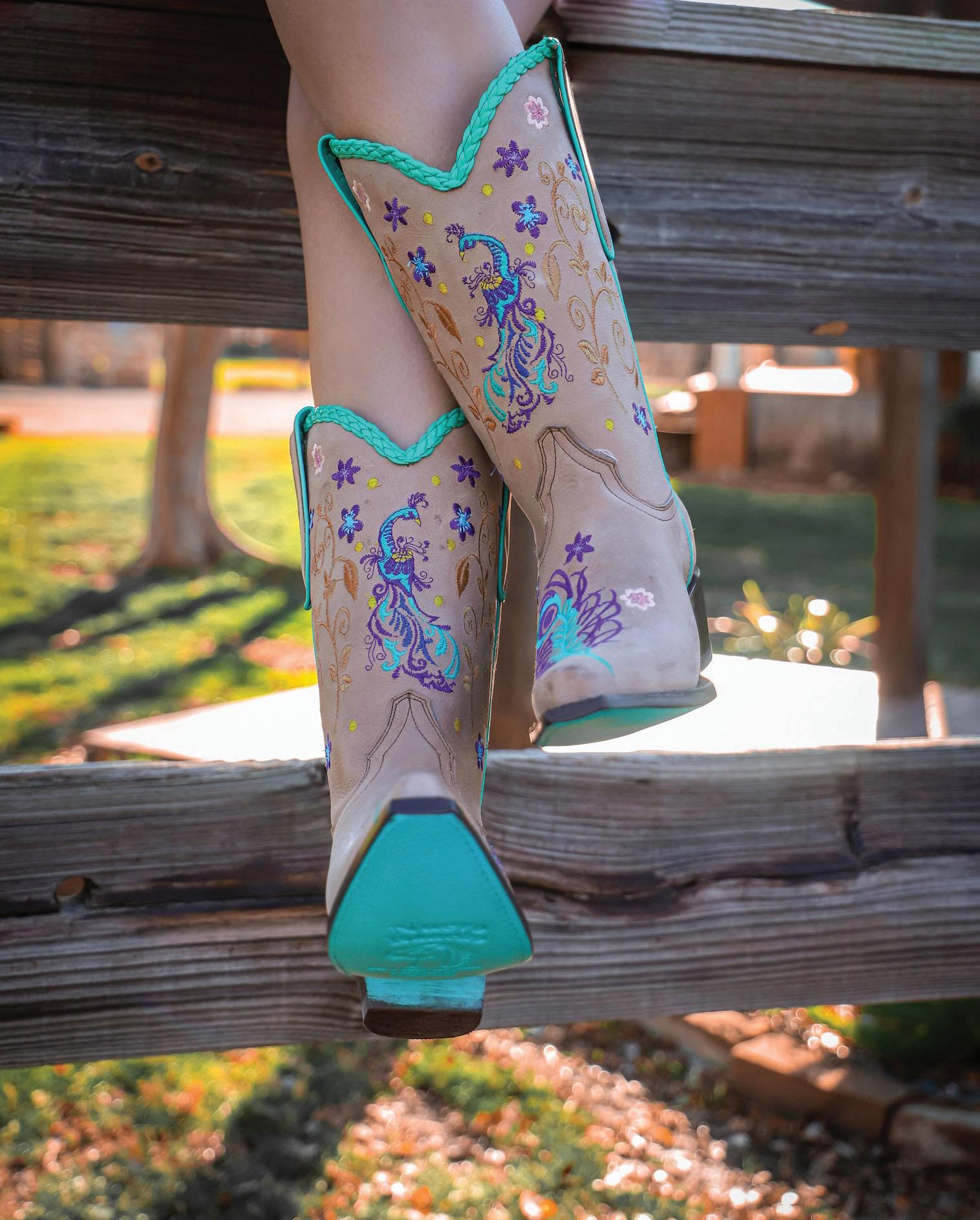
36 minute read
NUEVO RANCHO
from OTK Issue 07
by One To Know
Stomping the Yard
How a scripture-stamped boot company is bringing bold, Western flair to the Stockyards
Advertisement
By Myriam Gonzalez Photos courtesy Jena G Photography
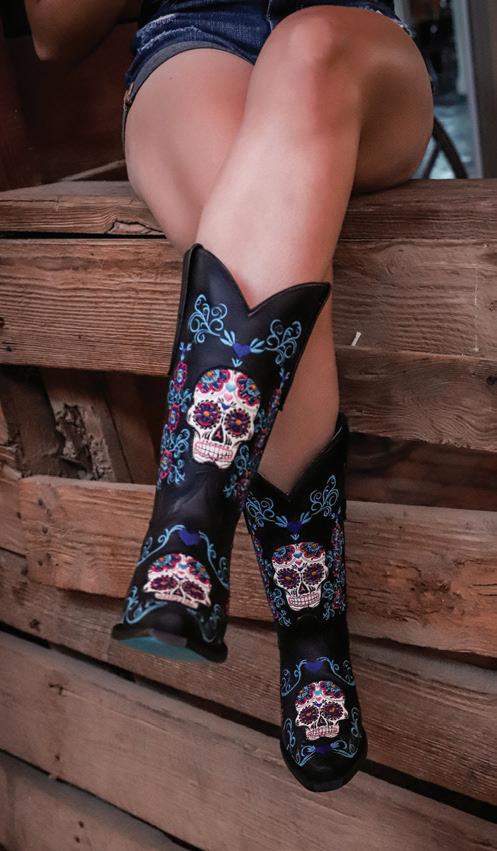
Rooted in faith and bursting onto the Fort Worth Stockyards scene in 2019, Nuevo Rancho brings a mix of brightly colored designs that range from its signature insole cushioned boots to hats and apparel — a complete head-to-toe look, as owner Teresa Morales describes. After years of wearing uncomfortable boots, Teresa and her daughter, co-owner and creative director Koko Gonzalez, began discussing the creation of a fashionable boot that people can wear “without the achy feet,”
Koko says.
In 2014, Nuevo Rancho launched online, selling Western boots, handmade in Mexico and stamped with a scripture from Jeremiah 29:11, “For I know the plans I have for you,” a phrase that Teresa says deeply resonates. “We don’t know what’s ahead of us, but the thought that God has a plan for all of us — I thought that was the perfect scripture,” Teresa says.
After a few years of strong internet sales and a growing customer base, Teresa and her family decided to open their storefront in the heart of Fort Worth. “I love how the Stockyards stay as true as possible to how it was in the old cowboy days,” Koko says.
As creative director, Koko says she finds her inspiration in day-to-day activities and incorporates them into the design of each boot. “Our boots are for those who want to stand out from the crowd and who are not afraid to be different and be seen. After all, the world is your runway — might as well wear cute cowboy boots,” she says.
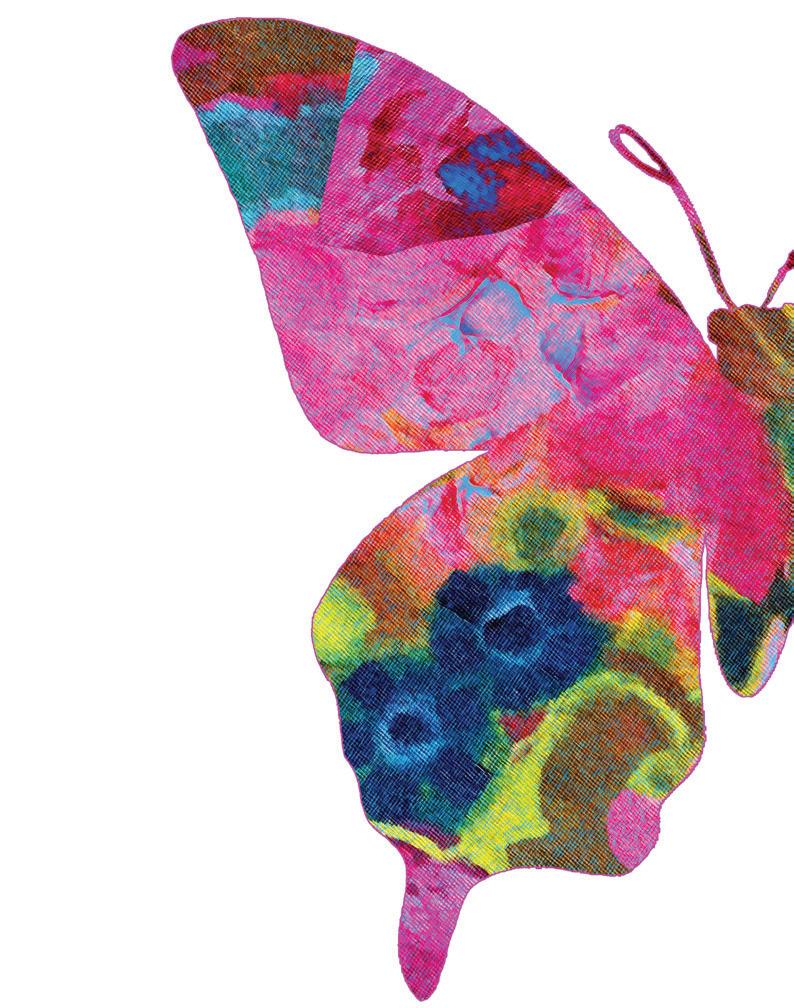

Transformation
By Jocelyn Tatum
Illustration and photos by Heather Essian
Using acrylic paint on raw canvas, cover artist Heather Essian chose a butterfly because it is the symbol of transformation. Of change. Reading Danika Franks’ story by writer Shilo Urban reminded Heather that we are always undergoing our own metamorphosis. “A butterfly comes to mind, the way it evolves and the time that it takes to get to its ultimate place of beauty and everything it represents,” Heather says. “The cover will be just half of the butterfly because she’s kind of in that waiting, not knowing what is next for her.”
Subscribe
6 ISSUES A YEAR A new Fort Worth publication for women.
SCAN THE QR CODE and subscribe today
ONETOKNOWMAGAZINE.COM
@onetoknowmagazine.com

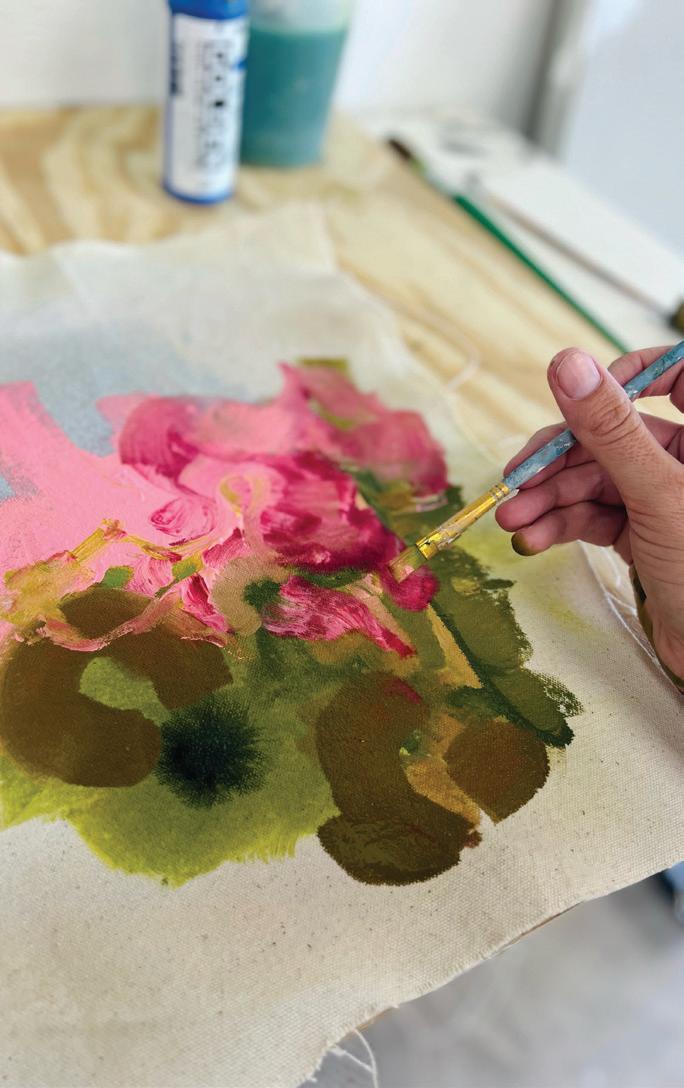

The process
The art was still evolving when I first spoke to Heather for this little story on the making of our cover. “She’s a work in progress, I’m a work in progress, the art is a work in progress for the cover story. We are all in progress right now,” she says.
Heather says staying in her usual creative lane, which is abstract painting, would be too safe and wanted to challenge herself. Heather does not draw or paint still life, but she depicts this image in a way that was not abstract yet true to her style. For this reason, she says it is the most challenging piece of art she has completed in her career.
Heather was a full-time professional photographer before she slowed down to start a family more than 10 years ago. At that time, she changed to other creative outlets like painting and says for the first time in her creative career, the process of creating this cover merged her former life as a photographer (using Photoshop), her current life as an abstract artist, and where she is taking her art — cutting up her work and reassembling it onto canvas for intrigue, which is depicted in this butterfly. Like Danika, she challenges herself to grow but brings her life experience with her.
Backstory

Danika’s and Heather’s husbands knew each other through their work with Texas Christian University and had been out to dinner with each other several times. While they admired each other, Heather never knew the depth and power of Danika’s journey until she read the cover article. “I do relate a lot to her story, just the evolution of her interests and her profession,” Heather says.
Like so many women struggling with balancing careers and being mothers present for their children, Heather related to that a lot as a former professional photographer who worked nights and weekends. Like Danika, she is always transforming, seeing balance and surrendering to the challenges in her work that inspire growth. “Just the tension of being a woman who is creative, who’s driven, who wants to do her own thing and explore what she is capable of, but who also wants to be present for her family,” she says.

Each issue we ask a local artist to design our cover, and we write about what inspired her design here in the Craft section of OTK Magazine. If you are interested in designing one of our covers, email art@onetoknowmagazine.com.
Heather’s artistic style is more abstract and comprised of muted, neutral tones and impressionistic landscapes as seen in this image she provided for this article.
Empowering Women One Story at a Time Franks
THE METAMORPHOSIS OF A MODERN RENAISSANCE WOMAN
By Shilo Urban Photos by Amber Shumake
Doctor. Dean. Mother of three. Superwoman
Danika Franks had it all: the prestigious title, a vibrant career and rewarding work as a mentor to young minds —
and then she walked away. Facing an uncertain future, she stepped off her hard-earned path to search for an unknown destination. Along the way, she is finding her truth.
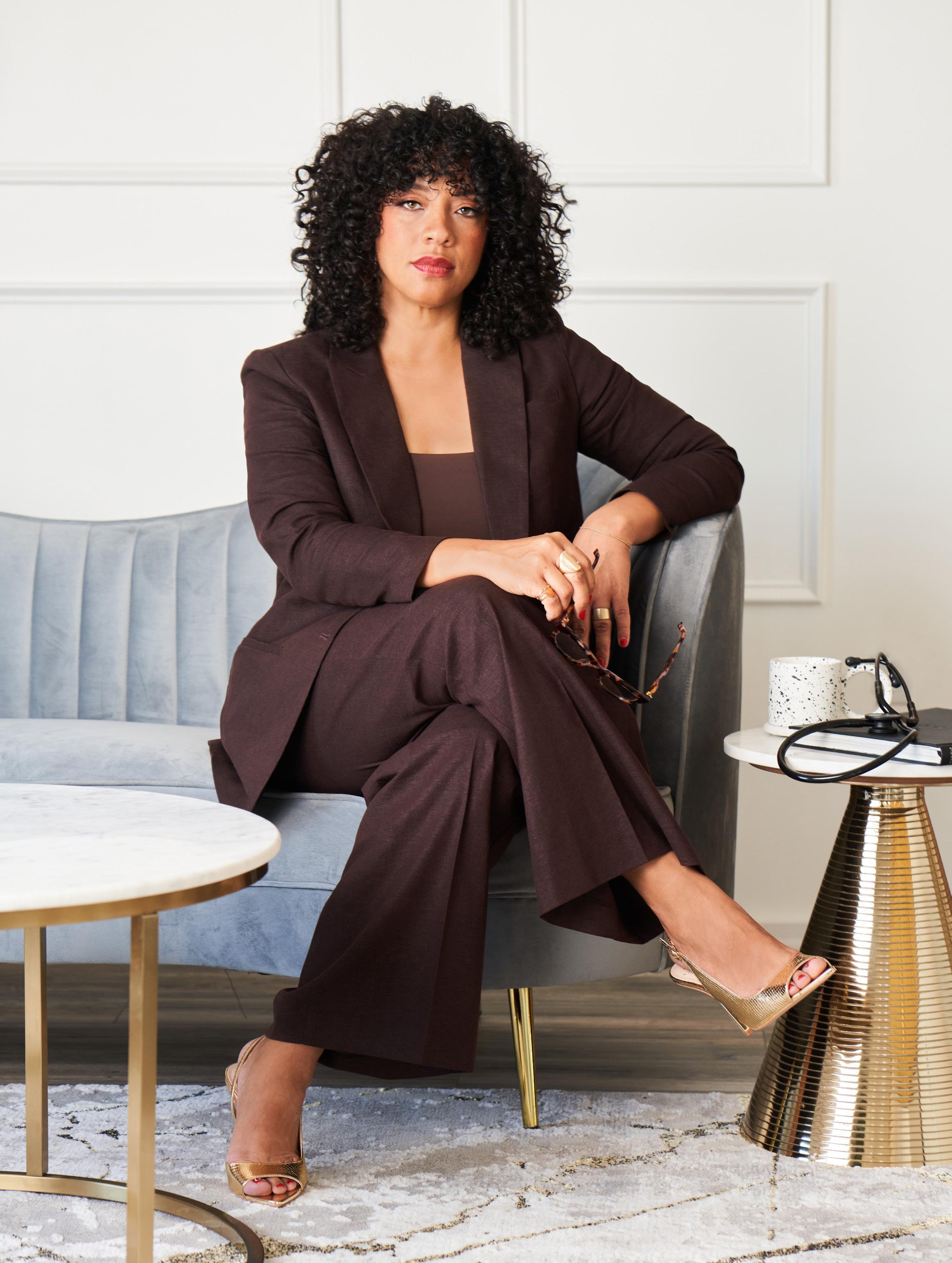
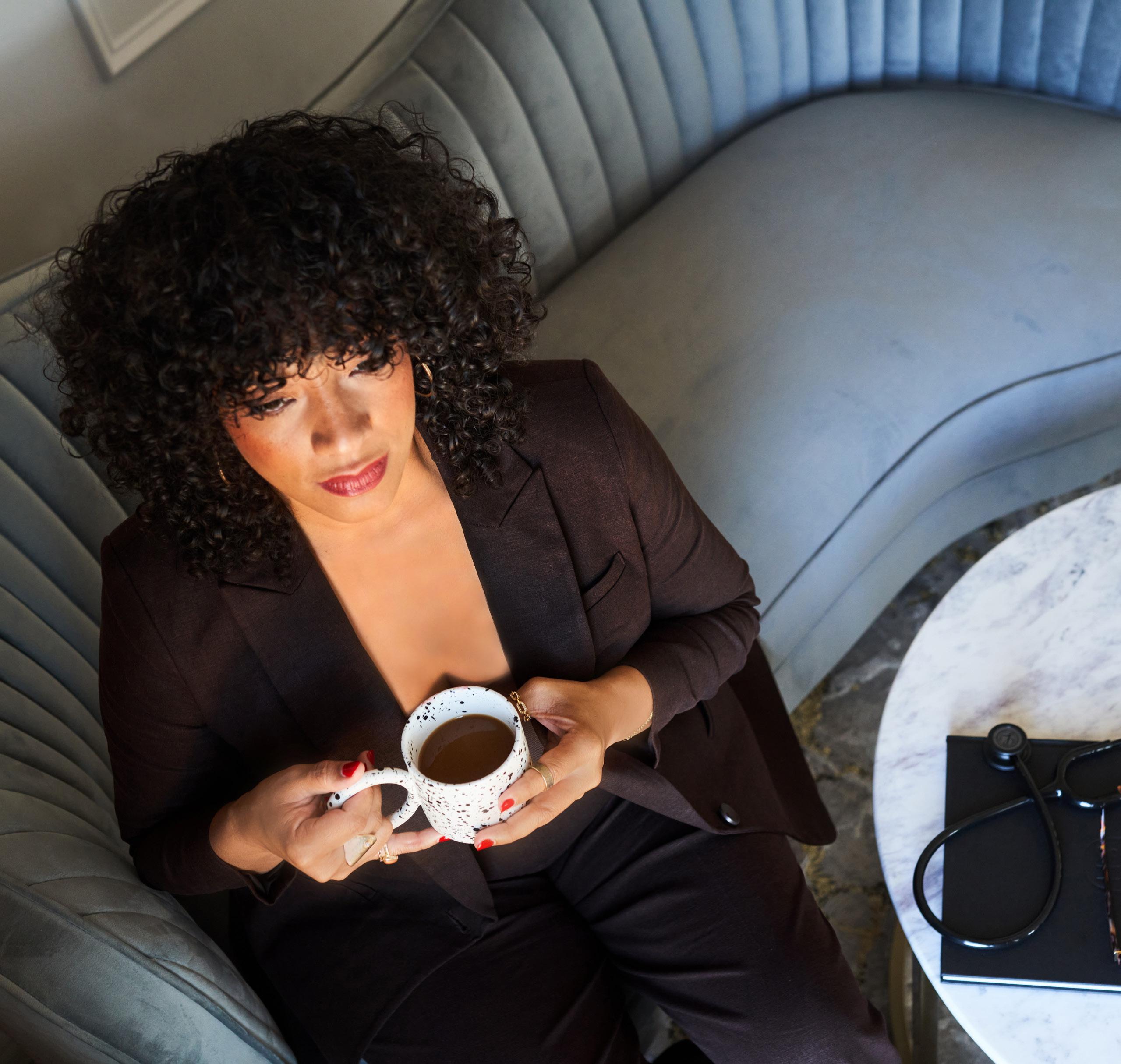
“I am making one of the most courageous jumps that I may well ever do in my life,” says Danika, the former Assistant Dean of Student Affairs at Texas Christian University School of Medicine and emergency medical physician at Texas Health Resources. A modern Renaissance woman who is continually learning, her interests go far beyond medicine to encompass culture and community, design and the arts, writing and sports.
Danika’s leap of faith began many years ago as a smart and feisty little girl grew into a first-generation college student and set her sights on medical school. She was soon drawn to the diverse, dynamic nature of the emergency room. Emergency medical physicians encounter every type of patient imaginable, which requires broad-based knowledge and skills. “You know how to handle the first 15 minutes of every emergency,” explains Danika. Many see the ER doctor as a “jack of all trades but a master of none,” an idea that she has both bristled at and connected with. “I am a lot of things, and I like doing a lot of things. I don’t want to be pinned down.”
The grueling experience of becoming an emergency physician would transform Danika’s identity in more ways than one. “For most of my life, I identified as biracial,” she says. Her mother is a white woman from small-town South Dakota, and her father is a Black man who grew up in Birmingham, Alabama, in the 1960s. Danika’s sense of self began to shift in her mid-20s as she progressed through medical school and residency. “That’s when I started identifying more as a Black woman. Part of the reason for that was, I realized that the world saw me as a Black woman; they did not see me as a mixed-race woman. Not that it was the chief factor. I was living my life as a Black woman.”
Danika added a new layer to her identity when she married and gave birth to a son, Eli. “One day probably a little bit before he turned one, I just remember looking at him and saying: ‘Oh, my God, I am raising a Black man.’ At that moment, it hit me all at once. Suddenly I could jump into an awareness of what it might be like to walk on this earth as a Black man, because now through empathy I am looking at this through the eyes of my child.”
And then came a daughter, Eden. “Birthing a girl into this world made me look at my own womanhood in a way that I had not before — and I wasn’t quite okay with that,” she admits. “I wasn’t sure if I wanted to put the lens up to myself and evaluate what it takes to raise a woman, a Black woman, to make sure that she feels her strength and knows her worth … I remember being completely mind-blown.”
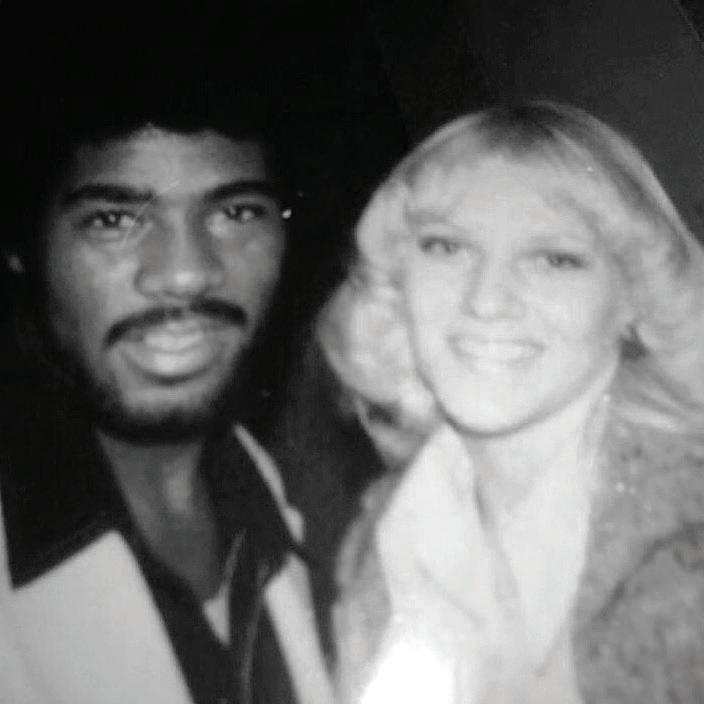
1975, Danika’s father, James M. Taylor Jr., and her mother Sandee L. Taylor in San Antonio, TX.
Photo courtesty Danika Franks
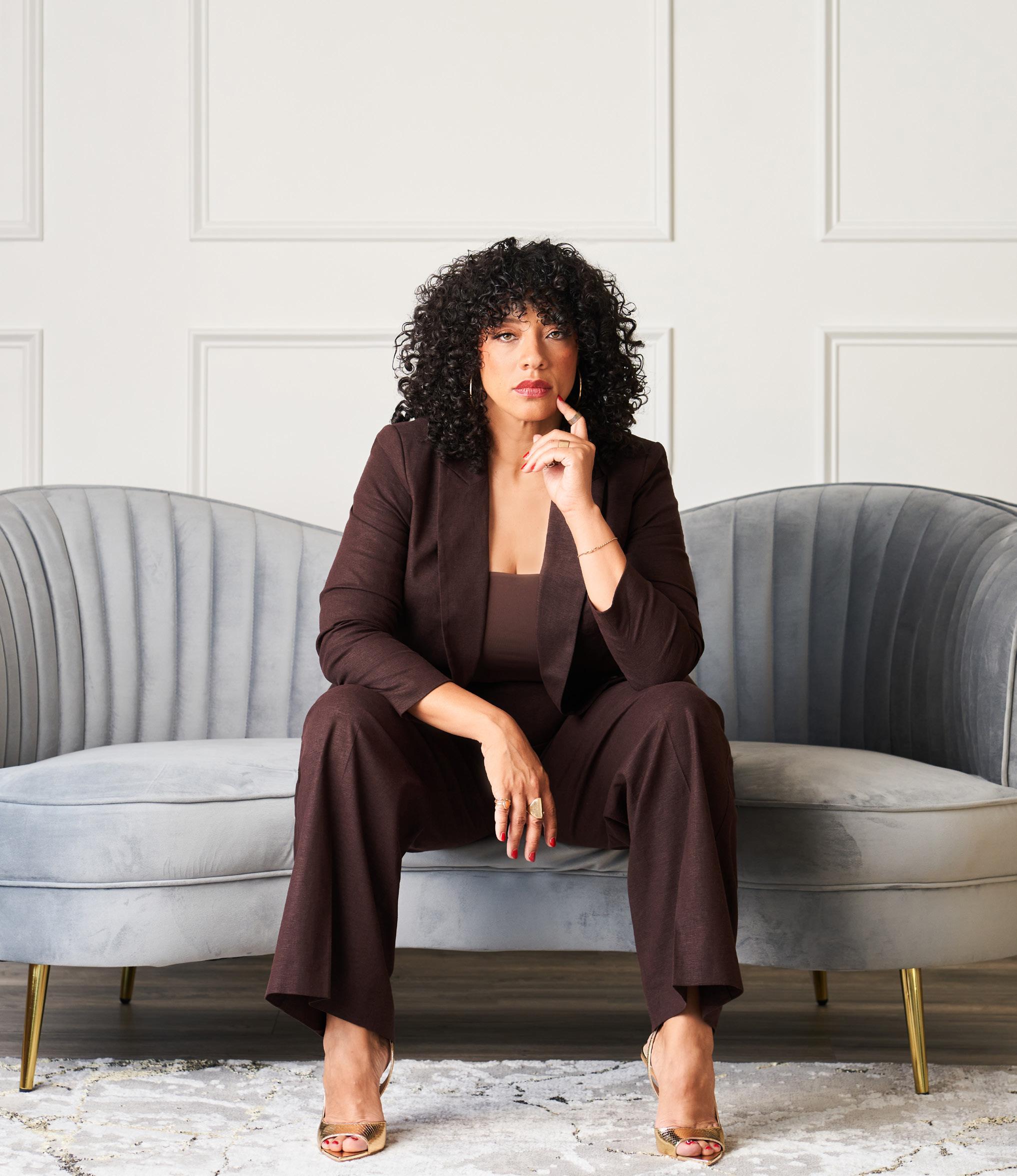
When her second daughter, Elle, arrived, Danika had been practicing as an emergency room physician for half a decade, saving lives daily. Despite the diversity of her work, it didn’t allow her to express her whole self. It didn’t even come close. “I just kept having more and more things I was interested in,” she says, like the importance of design in health care. “I see through the lens of art and design and community and compassion.” Her broad perspective wasn’t always appreciated within the medical culture, making it difficult for Danika to fit in. “So, I would hide it and not let people know that I was all of these things.”
When offered the position of Assistant Dean of Student Affairs at TCU School of Medicine in 2017, she leapt at the opportunity and joined her husband, Chauncey, (chaplain of the TCU football team) on staff. “I remember thinking: This is it. This is the thing that combines all my loves. I can be innovative, I’m at a brand-new medical school, we can do this in a way that is entirely different from the way doctors have been trained for decades … I can be creative, I can be a designer, I can help to cultivate minds and presences. This is the thing,” she says, “and for many years it was.”
But as the seasons passed, Danika became increasingly aware of an imbalance in her life. “With 120, 180, 240 students that were my responsibility, and that I also had to answer to … it did not give me the capacity to be present with my children and my husband. I was operating out of ‘this much’ margin and trying to give them the best of me, but in reality, everyone else was getting the best of me. There were many times my children would come to me and want to have a moment, and I would say, ‘Okay, just hold on a second.’ Or ‘No, I can’t.’ Or I would try to be there with them, but my mind was elsewhere. I just wasn’t present.”
And her children (now ages 12, 11 and 7) needed her more than ever. “I thought parenting was going to be the hardest when they were babies — getting them to sleep and napping and all of that,” she says. “But it turns out now is the hardest. What you do when they are pre-teens is going to amount to so much in terms of who they become as people. Parenting is way more vital; they need mom more now. They need the ‘me’ that will sit and process with them.”
Someone else needed Danika’s love and care, too. She did. The depression and extreme anxiety she had experienced most of her life finally caught up with her. Long adept at hiding her struggles, especially from herself, she had never taken the time to deal with her slowly deteriorating mental health and the internal chaos it caused. “Because there was always something more important. Medical school was more important. Residency was more important. Birthing my children was more important.” Physicians wrestle with mental health at an incredibly high level, she says. “It’s hard work, and it’s high stakes. I learned to not attend to my needs and who I was as a person because what I was doing was so incredibly important.”
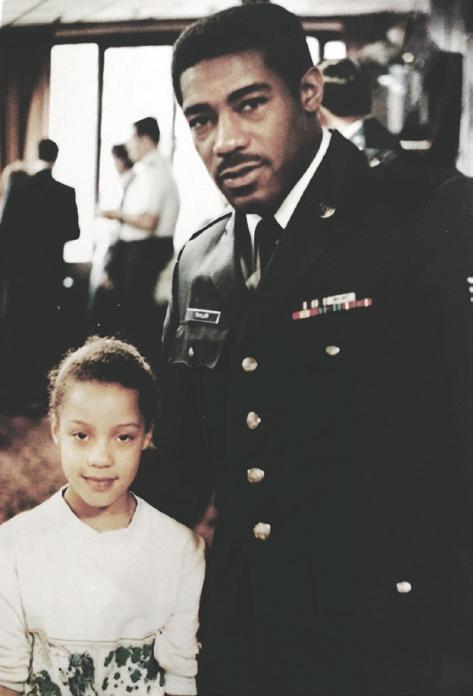
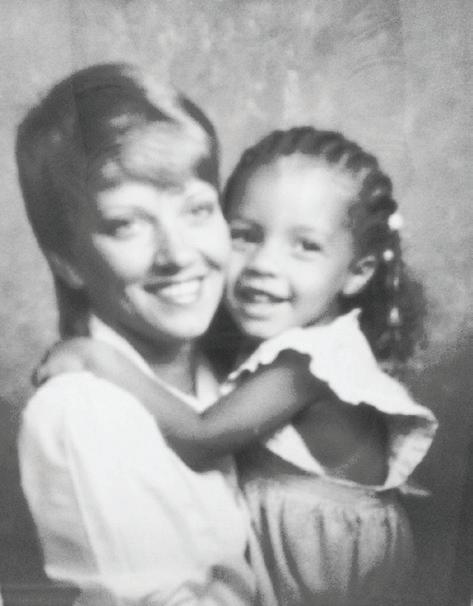
Top: 1987, Danika and her father at his promotion ceremony for USAF Tech Sergeant in Wiesbaden, Germany. Bottom: 1982, Danika and her mother in Albuquerque, NM when her father was deployed to Incirlik, Turkey.
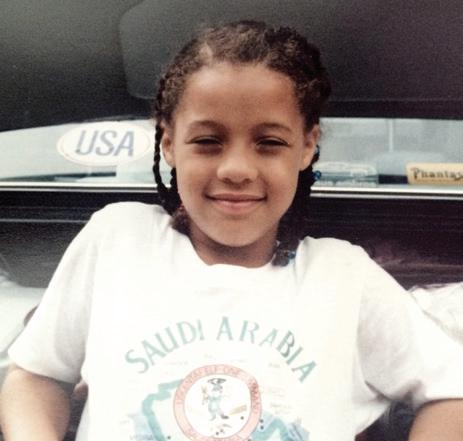
It all came to a head for Danika as life flaunted its uncanny penchant for pouring down multiple challenges at once. “I was struggling. I was trying to do so many things, but I felt like I was doing nothing well. I finally was just like: What’s the point of all this? The pressure of trying to do everything was too much for me, and I was questioning my entire existence as a result. “I needed to make a big change,” she says. “It was either that, or I wasn’t going to be here.” She took a long, honest look at her career, her family life and herself — an experience she calls a reckoning. “It came with a pretty hard fall.” In order to move forward, Danika would have to be still. She needed to learn a new skill never tested in medical school: self-care. “Self-care is not a word that a child of the ’80s used,” she laughs. “You just deal with your problems. You don’t ask for help, and you certainly don’t go and get fancy help from therapists. This is all new to me.” Now working with a therapist and physician, her self-care practice includes journaling and a “significant” amount of time alone. “Being able to be in touch with your humanity, having clarity of mind, the ability to sit and be present … it’s a privilege to have that. Not every woman gets that.”
Danika was finally giving herself the time that she never had before, a necessity to face the difficult decisions ahead: How do you find balance when the ground keeps moving beneath your feet? How do you prioritize when there are so many valuable things competing for your attention? “Being able to identify with your human limits is something that I think you really have to grapple with on this side of life,” she says. “You have to take the time to figure out why these things are so important to you and rank them more carefully and more seriously.”
For Danika, this meant stepping down from her position at TCU and trusting herself to create a new path. She’s starting to embrace the contradictions and multitudes she contains, being a jill of all trades in a world that increasingly values specialization. “I’m learning to love that part of me. I have not always loved it. I’ve been frustrated many times because I wish that I could just be the quintessential physician or that I could just be an artist and dive deeply into those things.” Danika’s growing self-acceptance has given her the freedom to make a bold decision: “I’m going to be all of it,” she says. “I don’t know what it’s going to look like yet, but I am all of these things. And I’m going to find a way to live that out.”
Above: 1988, Visiting Danika’s cousins Ryan and Joni along with Danika’s baby sister Desire’ during their short trip back to the U.S. Right: 1988, Headed to the airport to take a flight back to the U.S. for a family funeral.
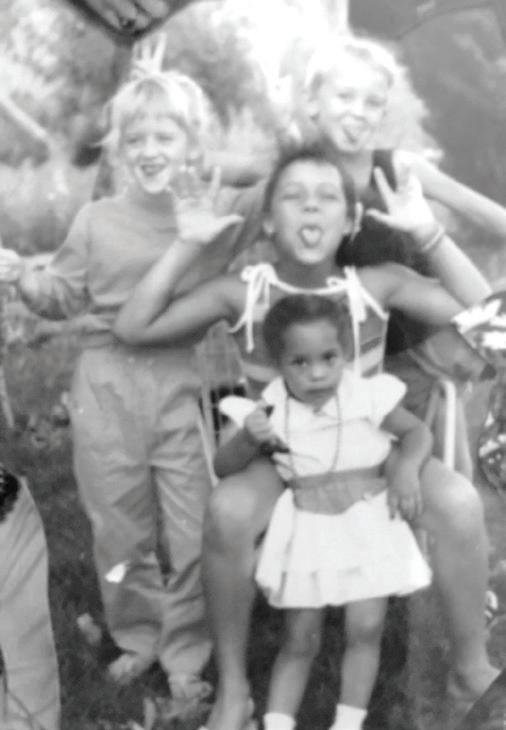
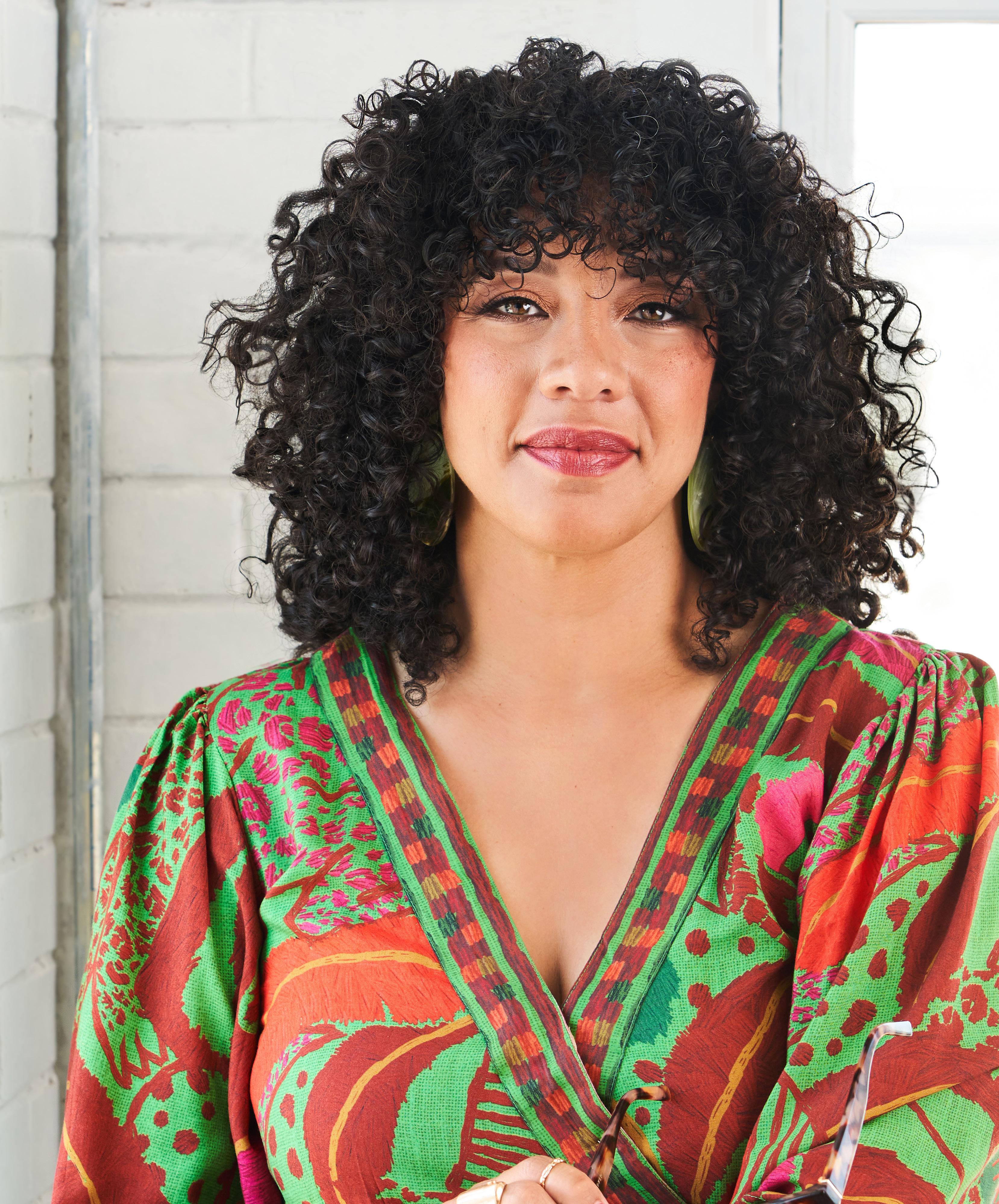
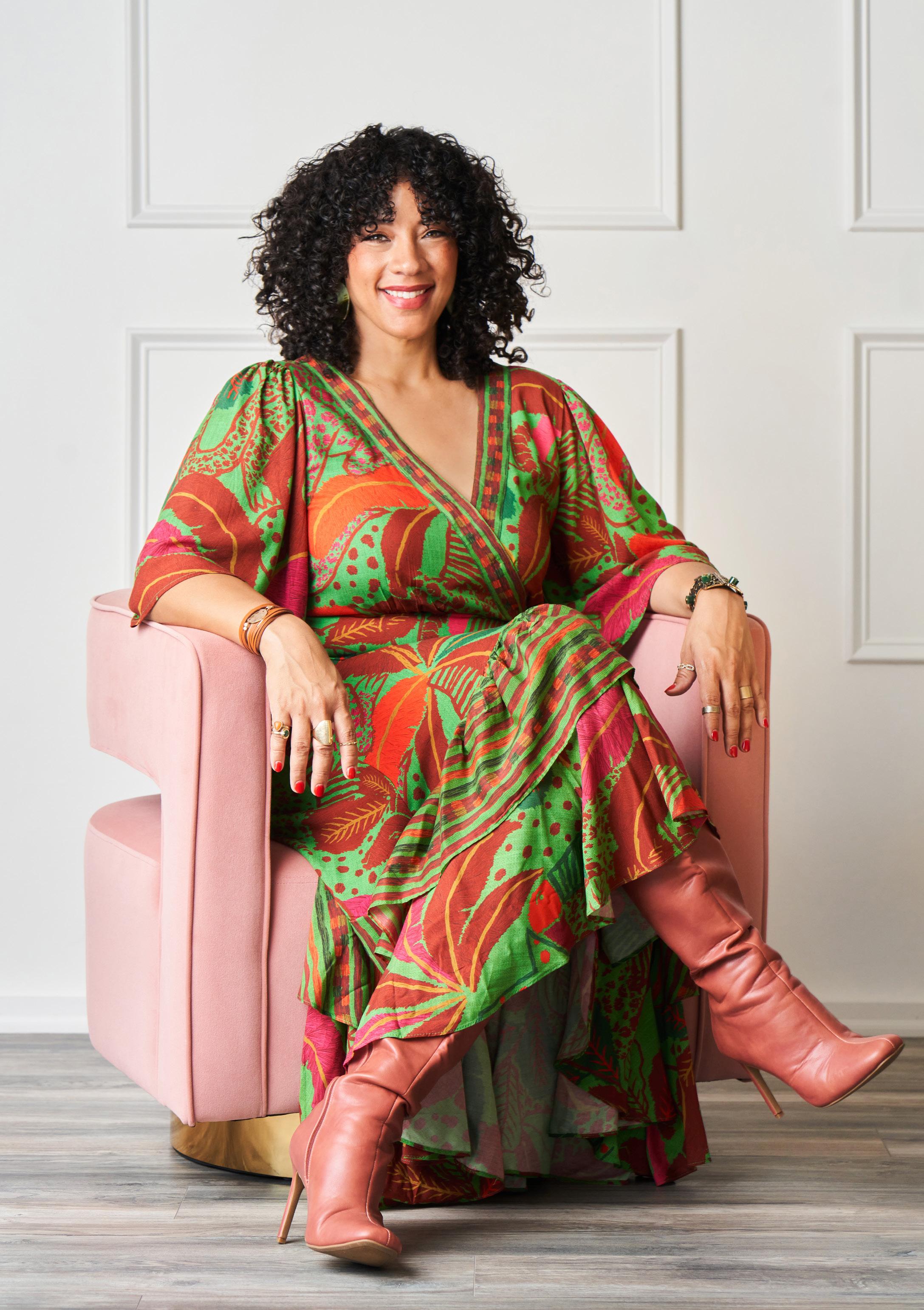
Health-enhancing environments, community building, philanthropy … it’s all on the table for Danika. “I want to give myself over to something that is really convoluted and a little chaotic,” she says, beginning with her long-standing desire to write a memoir. She’s three chapters in. She has also founded Community Flourish, LLC, which will partner with health care providers to design spaces that promote mental and physical well-being.
And then there’s the tennis court. When Danika’s family moved into a house near TCU in 2020, the backyard was “a complete jungle.” After clearing away the overgrowth, they were surprised to discover a 6,000-square-foot tennis court. “We birthed the idea of having a nonprofit that will work with small groups of young people on our campus here, but its real roots will be reaching out into the city where they live and increasing their access to tennis in their neighborhoods.”
Called The Court, the freshly launched organization will also be a place for college students. “It’s a multi-tiered effort,” she explains. “We wanted to create a space where they can come over in a bigger group and hang out, where they could have a good time on the court and have access to family while they’re away from their own.” Beyond the bouncing tennis balls, The Court will also be building a true community, something that has always been close to Danika’s heart. “When I look at the body of my work and even who I was as a child, the importance of community and being connected is what emerged. What I want to do from this point moving forward has everything to do with communities and strengthening them. That’s what I’m going to do with the rest of my life.”
Danika has stepped out of the shadows to walk into her truth with intention and clarity, destination unknown. Her journey through the darkness has brought to light her greatest strength of all, which lies not in her many talents and achievements — but in her ability to inspire others with her openness and vulnerability. She has been publicly processing her raw emotions in online posts and videos, sharing her fears, her self-doubt and her grief over letting go. “It’s scary for me,” she admits. “The idea of having it all together and always seeming like you’re excellent at what you do … that’s something I have quietly coveted for a long time.” But now she’s revealing her reality: “I don’t have it all together,” she says, and the truth has set her free. “I’m hoping as it’s freeing me up, it will also free some other people up.”
By accepting her shifting path and the beautiful complexity of her existence, Danika empowers us to do the same. She isn’t a fearless superwoman after all; she’s a real person swimming through the same sea of uncertainty and unexpected challenges we all are — yet she keeps moving forward. Resilience.
“I’ve made some bold choices in the last few months, and I’m not sure where this is going to land,” says Danika. “But I’m learning as I go.”
At first, the 24-year-old brunette in a maroon, lace summer dress seems reserved as she walks into the conference room. She speaks in a soft and thoughtful voice, taking her time with her words. But what Lauren Fairchild has to say is big, and she wants to make sure it is loud and clear — she has Down syndrome, and there is nothing she can’t do.
“I want to follow my dreams and want to be independent and do stuff on my own,” she says.
Lauren strives to learn how she can be as independent as possible. She loves it when her grandmother drops her off at social events and doesn’t come in with her.
- LAUREN FAIRCHILD
Lauren started therapy at a speech and hearing clinic at the University of North Texas when she was 8 years old. This empowered her to learn how to read and write, something her grandmother says is a challenging skill for those with Down syndrome (DS) but one that was important to Lauren. She is determined to be a public speaker advocating for people with intellectual and developmental disabilities (IDD) and to let people know that having IDD doesn’t make them less human, and not only that, but to have big plans and dreams no matter what.
She works to develop speech and language where anyone could understand her, not just people with DS. Her ability to communicate to large groups was the most important goal to her, so she picked up speaking skills everywhere she would go, learning eye contact, facial expressions and hand movements, her grandmother and guardian, Cleta Fairchild, says.
A FEW OF LAUREN’S FAVORITE THINGS:
1bookclub 2 swimming 3 being with friends 4 hugs 5 public speaking 6 sushi and lobster, well anything really
Lauren started putting those public speaking skills to work when she would visit Cook Children’s Medical Center to talk to new parents of children with DS. This was a gig with the Down Syndrome Partnership of North Texas (DSPNT), where she also works as a self-advocate board member mentoring the younger members and teens with DS. Now, the nonprofit’s director Kim Rocha employs Lauren almost exclusively for public speaking. “And she loves it; she loves being on stage,” Cleta says.
In high school, Lauren used to lip-synch Whitney Houston songs and select her teacher’s aides to be her backup singers, but as they approached the front of the stage when it was their turn to back up her vocals, she would “shoo” them back so as not to steal her light. It made everyone smile.
Lauren recently finished a college program for adults with IDD at Texas A&M University. The students needed a 70 to get the certification. She worked hard — days, nights and weekends — earning an 86. There were times she didn’t think she was cut out for such an academically challenging program. But her grandmother hired a tutor, and Lauren never gave up.
Because hospitals tend to see hiring adults with IDD as an insurance liability, it is difficult for Lauren to find work, but she loves staying busy and helping others. “I am very passionate on working with my family and my friends at Down syndrome events. It makes me happy,” she says.
She is now going to the Tarrant County College STEPS program where she is getting her basics. She has always been an excellent swimmer, and she says kickboxing keeps her active.
“I am not a spiritual person at all; I don’t even go to church, but I do believe God had a plan for her,” Cleta says.
DJ K-Sprinkles follows her dreams to rock the world
By Madelyn Edwards Photo courtesy Eye Catching Media
Kaitlyn Reyes is sometimes underestimated. The 17-year-old turntablist, better known as DJ K-Sprinkles, says because of her young age, sometimes people will hesitate to take her seriously or book her for gigs.
This is a challenge that Kaitlyn brushes off her shoulders. She knows what she’s capable of, and while she doesn’t expect everyone to see her the way she hopes they would, she strives to earn acknowledgement. “I would like to say my resume speaks for itself,” Kaitlyn says. “I know I’ve done a bunch of things to earn where I am at now.”
And she certainly has. Not all teenagers can say that they perform at gigs every weekend or have deejayed at the National Association of Music Merchants show. Nor can many say they have 34.7 K followers on Instagram.
Kaitlyn, a Dallas resident, started deejaying at 11 years old and learned from her father, a longtime DJ. She described her whole family as having a love for music. “Music is our thing,” she says. “Can’t live without it.”
Kaitlyn aims to use music at her gigs to create a joyful experience, and she says she loves to see people dancing and having a good time. “I’m glad I can bring them that happiness,” she says.
Preparing for live shows includes Kaitlyn putting herself in a positive and confident mindset. In the beginning, she said she experienced heavy stage fright and has since learned to break through the fear and nervousness.
Kaitlyn’s favorite part of being a turntablist is performing for children and getting to see them be happy during her shows. Kids line up to give her a hug when the performance is over.
And despite her successes at such a young age, Kaitlyn stays humble. She’s thankful for her supporters and wants to continue improving her craft. She also has a goal to travel with her DJ skills, specifically around Asia, being a fan of K-pop and BTS. Kaitlyn hopes to inspire those around her, too. “I hope to have, of course, a positive impact and just to try and show people anything is possible, just achieve your dreams,” she says. “You can do it.”
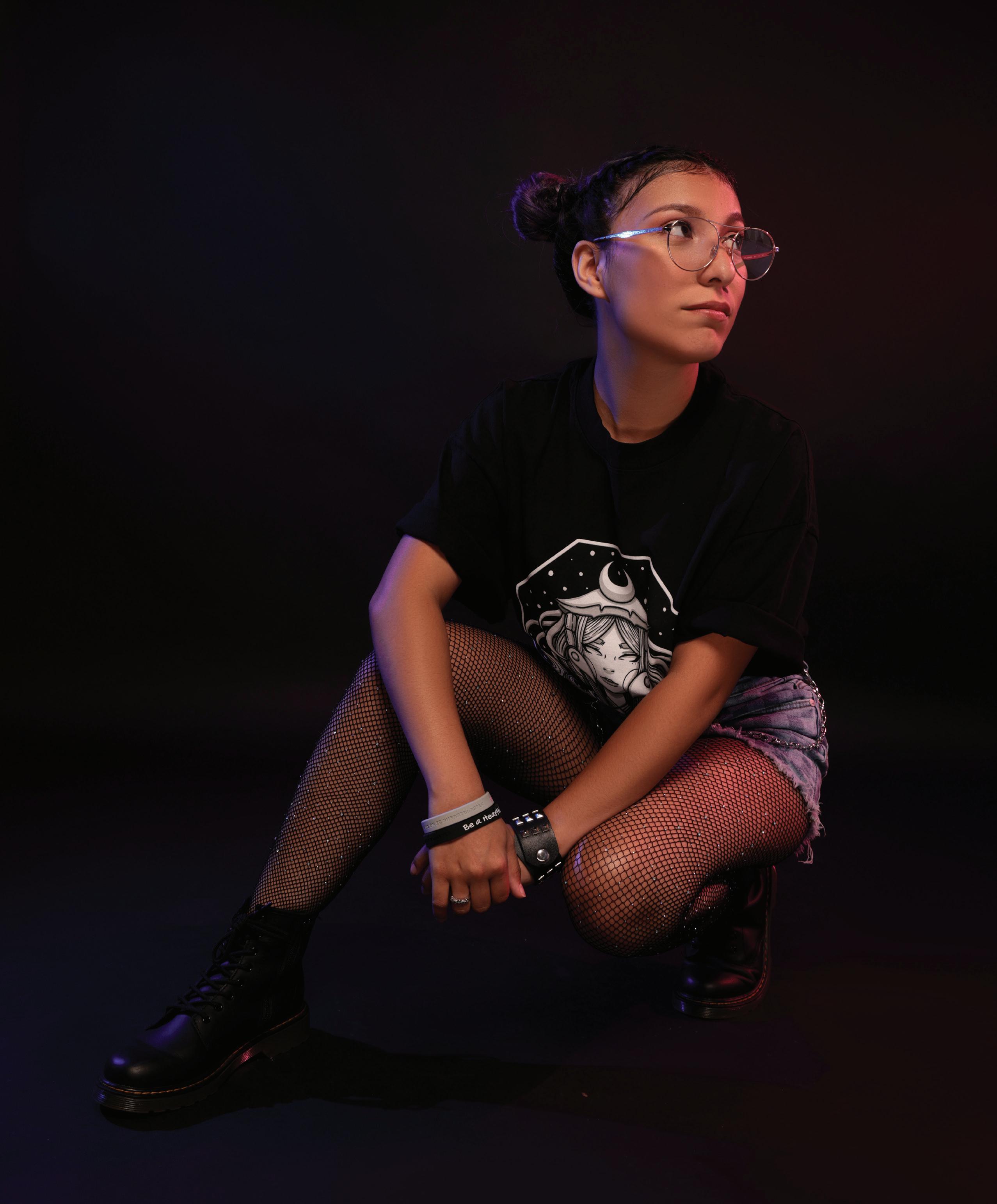
JPS Women of Power Renovate Health Care in Fort Worth
The women of JPS improve the medical game for their patients and the community after the challenges of COVID-19.
By Veida Dima Photos by MARIAFLASH Inspiration can come from anywhere, but these five execs are just a few of many leading women at JPS Health Network in Fort Worth who have found strength within each other. These strong, determined female leaders, who strive to better the community through diversity training, improve outreach programs, and overcome the trying pandemic, are navigating a new world of health care.
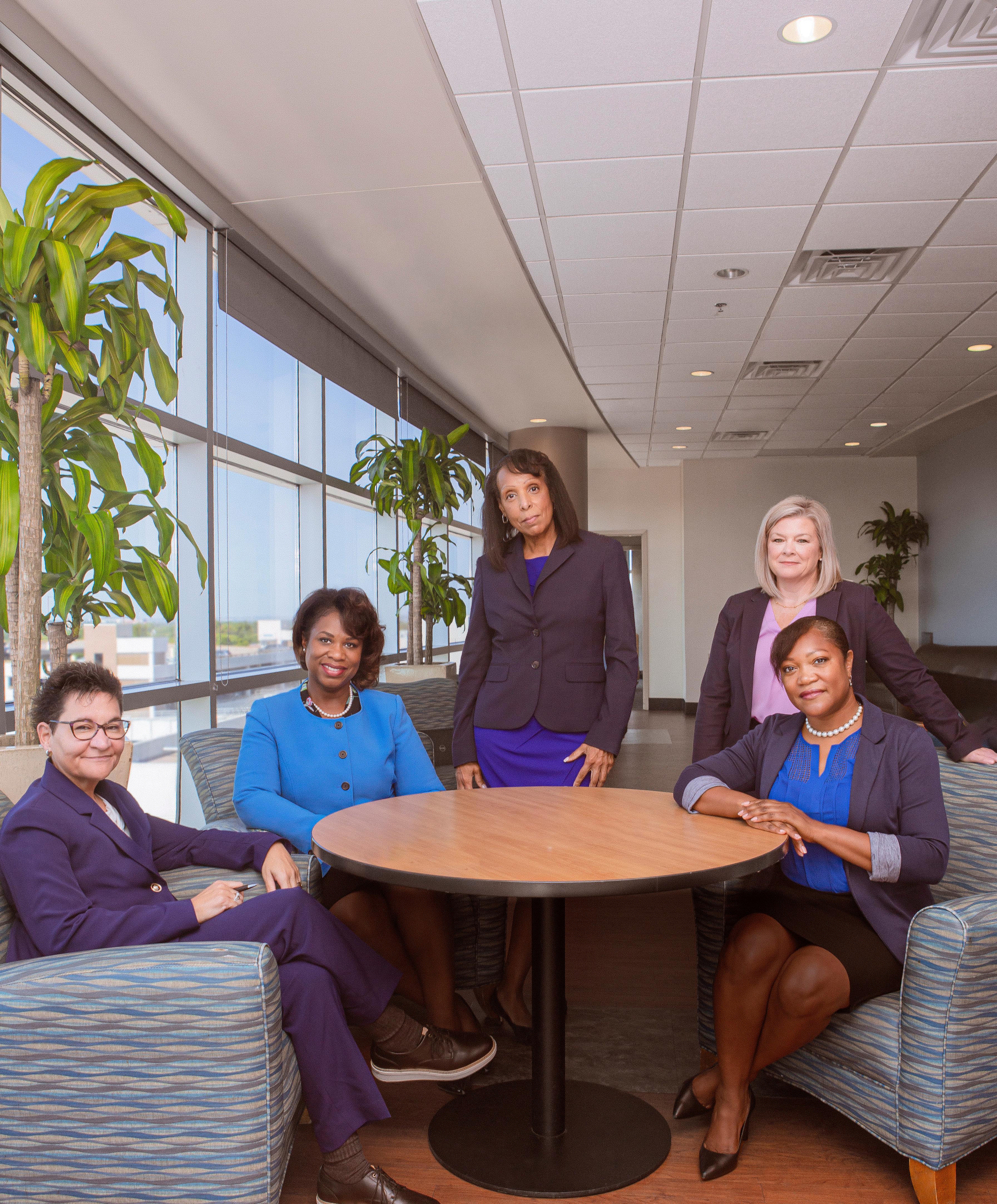
Dr. Tricia Elliott
Senior Vice President, Academic and Research Affairs
Within her leadership role at JPS, Tricia strives to validate and affirm the needs of her team, believing that people just want to be heard. She likes to think of her team as a network of family, working together for a common goal. “I think that there’s so much we want to do,” she says. “You want to do all these things, and then realizing, yes, we can. You can have it all but not all at once. So just pace yourself.”
One of many things Tricia and her team are trying to achieve is encouraging medical students and residents to take charge of the improvement of health care in the community through focusing on diversity and leadership training. “I want them to be change agents in their communities,” she says as she talks about the importance of expanding training for future medical members.
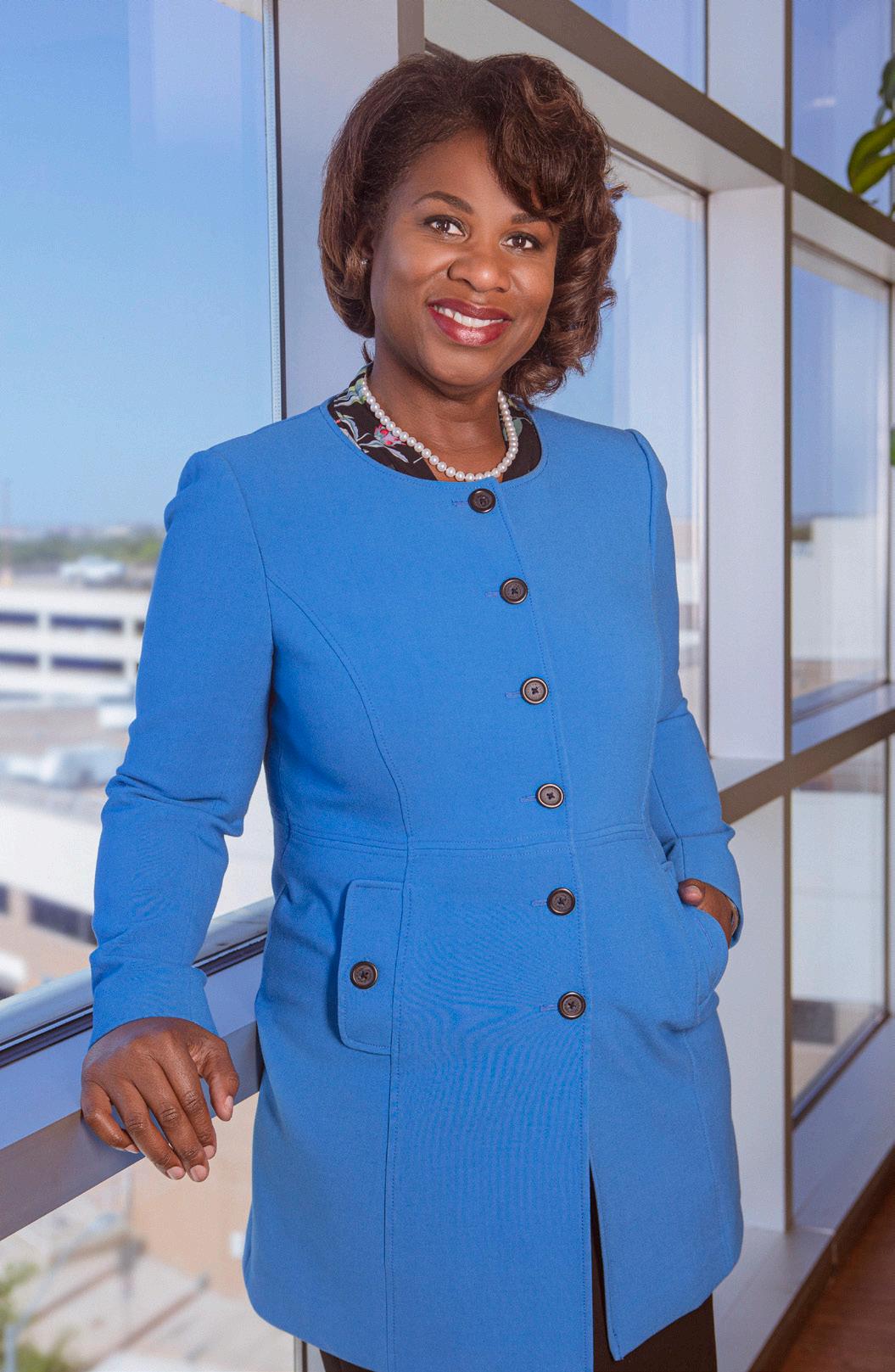
Zelia Baugh
Executive Vice President, Behavioral Health
Zelia is proud of how strong her behavioral health team is and how well they work together. “When we set goals, we always have Plans A, B, C, D, and E. So, if this happens, we do this. If that happens, we do that. We’re able to achieve our goals and be successful because my team is part of the larger team here. Our success is JPS’s success,” she says.
Zelia’s team — being the leaders of mental health of the JPS patients and communities surrounding the hospital — not only kept outpatient mental health clinics functioning during the COVID-19 pandemic, but also increased the number of patients seen at the clinics. “My leadership team here, our executive leadership at the main hospital, our doctors and providers, we were all in the trenches together. I mean, it was scary, but it was beautiful,” she says.
Zelia and the behavioral health team at JPS plan to make two improvements to the mental health community of Fort Worth: opening a new psychiatric emergency center that is easily accessible to patients in need and a new all-encompassed medical center specifically for patients suffering from mental health ailments.
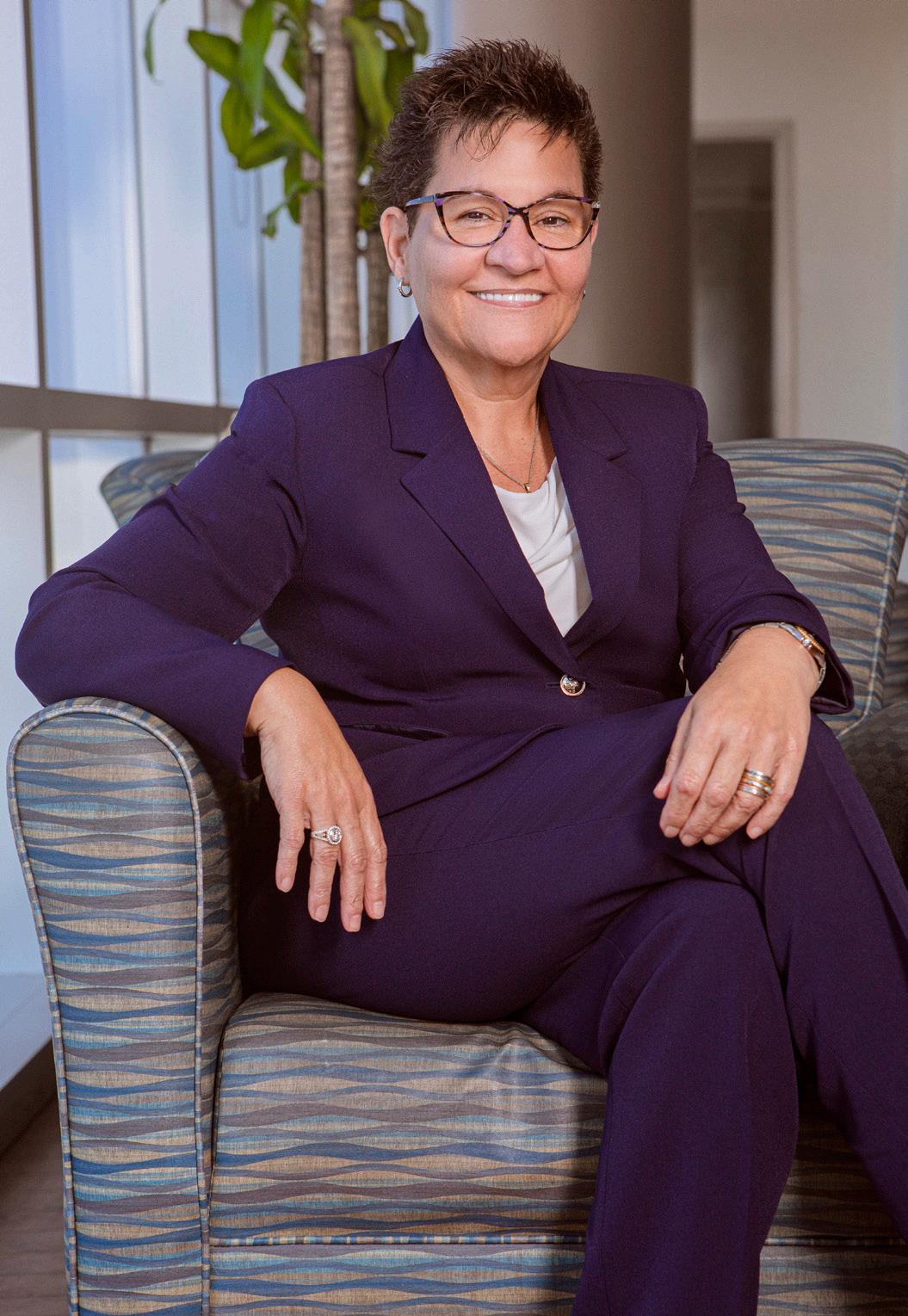
Jill Farrell
Senior Vice President, Chief Nursing Officer
Jill proudly represents thousands of nurses across the JPS network as the Chief Nursing Officer. She praises her nurses as she recognizes their importance within the medical community in Fort Worth: “I’m very proud of the high quality and the patient centric care that we provide our patients. Our employees and our nurses have such pride in the work that they do for the population, the community that we serve. Really, they’re the ones who inspire me.”
One thing Jill and the nurses at JPS have overcome is the impact of COVID-19 in the medical community. “The pandemic has created a lot of disruption in many ways, including our workforce. Things are different, and I think we all realize and understand it’ll never be pre-COVID times again… We’re having to adjust with this new kind of landscape and this new normal,” she says.
But the hurdles and changes were inevitable, considering that growth is never stagnant. Jill is reminded that “there are new technologies, there are new opportunities, there is new research, there are new things on the horizon that we learn from, and we constantly change.”
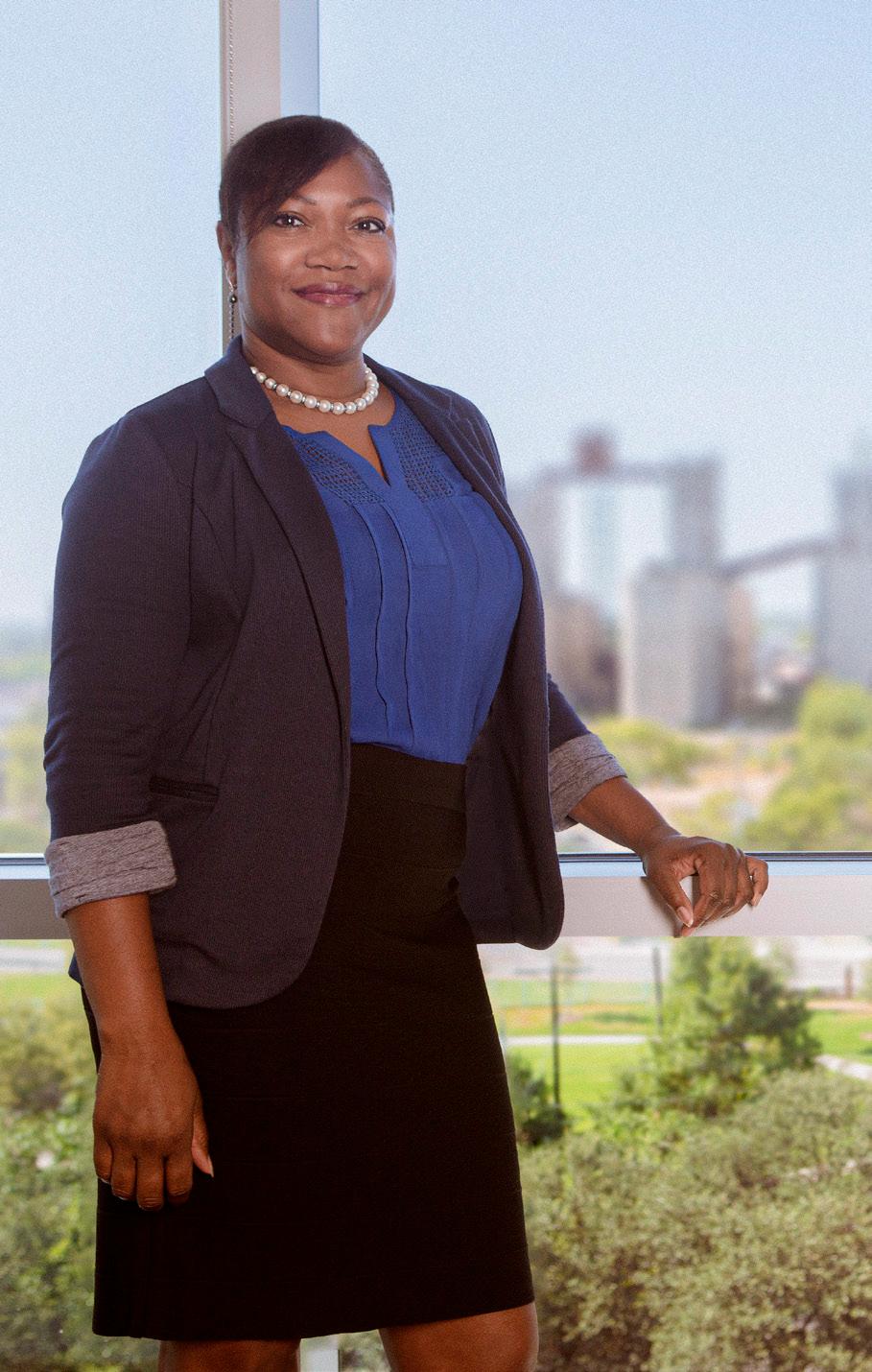
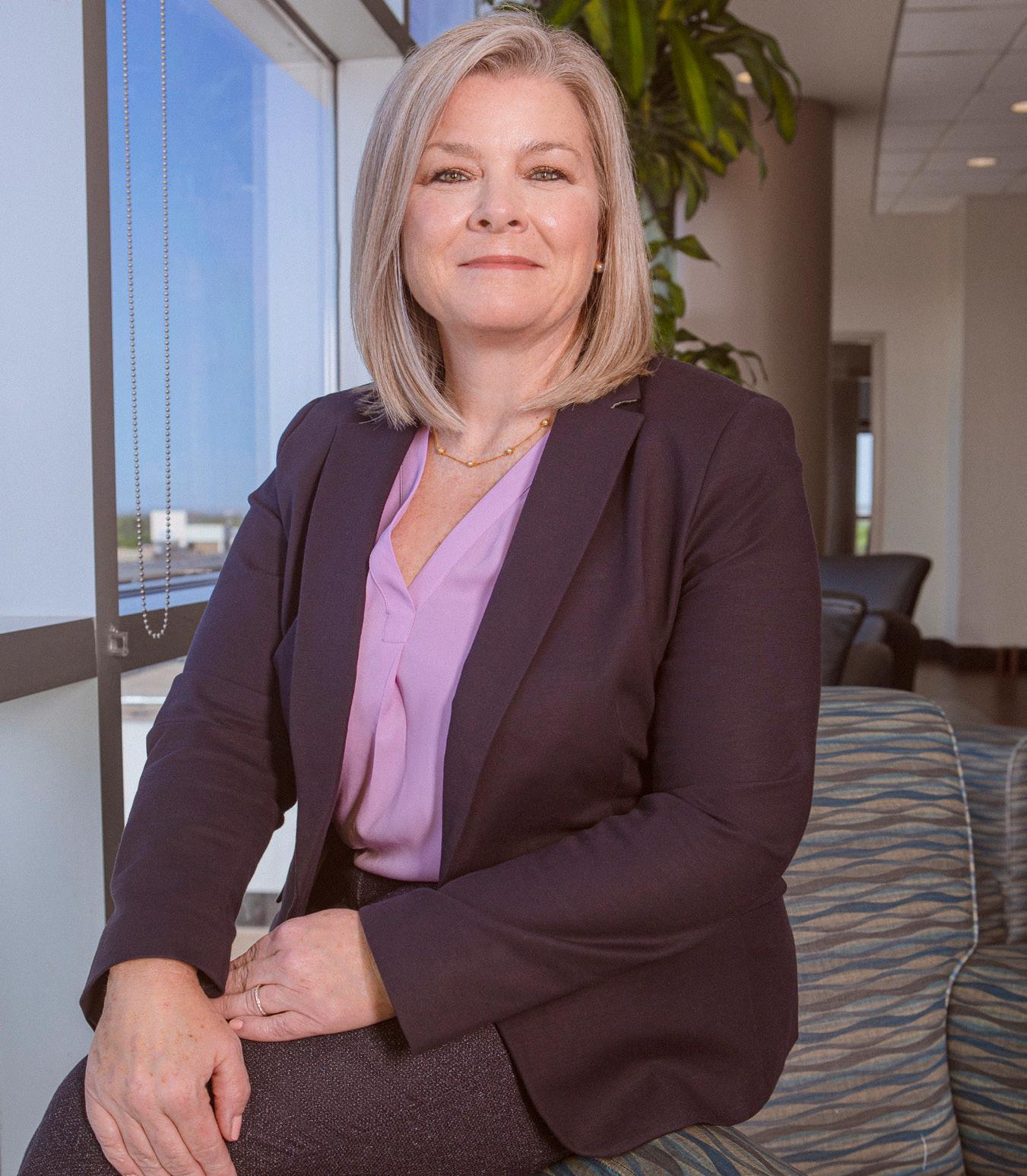


Daphne Walker
Senior Vice President, Chief Legal Counsel
Using her nursing background and desire to support those in the medical field, Daphne continued her education and became a lawyer. Now she is the first person to hold the new in-house position of chief legal counsel at JPS and leads a growing legal team advocating for its employees.
Attesting to the repeated remarks about the close-knit staff at JPS, Daphne also acknowledges the extraordinary care the employees offer patients. “The other day I was downstairs, and there was a gentleman who appeared to be blind,” she recalls. “There were at least three people who, as soon as they could see that he was trying to get [somewhere], they were jumping in to help him immediately.”
Daphne finds value behind admitting vulnerabilities to disarm the pressure to be perfect. “Recognize that anybody can make a mistake,” she says. “People will listen to you, and they’ll trust you more if they see you are a person who isn’t always right all the time. Be vulnerable.”

Dr. Karen Duncan
President and CEO
Being the first appointed woman president and CEO of JPS, Karen’s first two years in the role were controlled by the life-changing COVID-19 virus and the impact the pandemic on the medical industry. It’s her obligation to navigate JPS into the new world of health care which best suits the patients.
Some challenges that Karen and the other executives at JPS are still overcoming include the skills of the new health care worker, convenient telehealth capabilities and at-home patient monitoring. “The challenge would be for us to be able to… figure out how do we continue to be responsive to [the] quick kind of changes for health care,” she says. “I think that a lot of that’s going to be challenging overall for health care but even in the position that I have [at JPS].”
Karen is proud of her team members and their accomplishments as they acclimate to the new world of health care. She enjoys lifting them up and embracing their growth. “I just love being surrounded by bright individuals who are excited about what they do,” she says.

HONEYMOON
By Katherine Holman Illustrations by Diane Pereira aka Red Milk Crone
The couple decided that Tuscany in June would make the perfect honeymoon destination. Italian Cypress trees and antique villas sprinkled the sprawling hills of the countryside. From the side of the road, vineyards seduced travelers to come and delight in selections of wine. A blacked-out Maserati wove past the miles of grapevines. From the backseat, a man and woman admired the landscape. Each wore shiny, new platinum rings on their left hands, hers adorned with a diamond the size of an almond that reflected the light when it moved. They were similarly clad in white linens that had been pressed that morning.
The car turned onto a road that led straight to the couple’s destination. The Villa San Michele began to emerge from the greenery as the vehicle climbed the hill.
“It’s so beautiful,” the woman gasped. “It doesn’t look real.” Peering over her large black sunglasses, her eyes widened as the car parked in front of the hotel.
“Looks like the picture, that’s for sure,” the man held his phone in front of his face, double-checking the accuracy of the hotel website’s images. He waited for the driver to open the car door so he could step out.
The newlyweds stood looking up at the villa, the Mrs. twisting her ring. The man towered over her; there must have been 6 inches of difference in height between the two. His salt-and-pepper hair was impeccably groomed and connected to a slight beard. The woman standing next to him

contrasted him in almost every way: young, dark-skinned, and demure. She turned around to admire the view. Her eyes couldn’t locate the road they had been driving on, only the mirage of the vineyards that blended together to emulate a painting.
The Mrs. had barely gotten her bearings when a bellhop dressed in a double-breasted red jacket escorted them to their suite. Her husband strolled into the room to evaluate the place while she reached into her purse to tip the man.
“Grazie mille,” she thanked him and closed the door after him. She stepped into the bathroom to fix her hair. It fell right above her collarbones that jutted out like blunt knives. She saw in the mirror a baby face carved out with deliberate makeup application to disguise her true age. Her small frame appeared even smaller in the reflection. She took her upper arm in one hand and pinched her flesh, frowning at the amount of fat she grabbed.
“Lizzie!” her husband called from the patio.
Rebecca Balcarcel is the award-winning author of THE OTHER HALF OF HAPPY. Her new release is SHINE ON, LUZ VÉLIZ! which stars a bi-cultural girl who gets into computer coding and robotics and must save the day with her computer skills when her just-arrived Guatemalan half-sister goes missing. Rebecca serves students as Associate Professor of English at Tarrant County College. About judging, she says, “It takes bravery for writers to share their work, so reading these entries was a real honor. Our community is jampacked with creativity!” She was the judge of our first short story contest and selected Honeymoon, by Katherine Holeman, as the winner.
She jumped at his voice and shuffled to join him. “Yes, dear?”
“Why don’t you call for a dinner reservation. And, uh, put on something decent.” He glanced at her up and down. In his mouth was a cigar from a box in the room he had arranged to be placed upon arrival.
“Oh — this isn’t decent enough for you?” she joked, looking down at her tailored linen dress.
“Not for dinner, no.”
She paused. “I thought this would change things,” she gestured with her wedding ring.
“I guess a rock is a rock, nothing more.”
“What made you think things would change?” He took the cigar from his mouth.
“I don’t know. I want us to be okay.”
“We are,” he took a drag. “Now call for dinner and get dressed so I don’t have to say it 50 more times.”
“Tell me you love me.”
“You’re ridiculous.”
“Just say it, please.” She wrung her hands.
“I love you, and I would love you even more if you went back inside.”
Lizzie did as she was told, dipping back obediently into the suite to dial the lobby and arrange for dinner.
The couple arrived at the hotel restaurant at peak hour. Every table but one was occupied, and the ambiance was nothing short of romantic, thanks to a small Italian man playing mandolin. Heads turned as the two followed the maître d’ to the table marked riservato in the corner. Almost in unison, the female patrons stared at her while their male counterparts tilted their heads at the couple. Lizzie wore a crimson red dress that dusted the floor when she walked. Her husband plopped down in his chair across from her, unbuttoning his dinner jacket to let his gut hang over his belt.
“It’s so beautiful,” was all she could think to say as she gazed at the sunset.
“Let’s hope I’m not just paying for the view,” he huffed. “I heard the food here is hit or miss.”
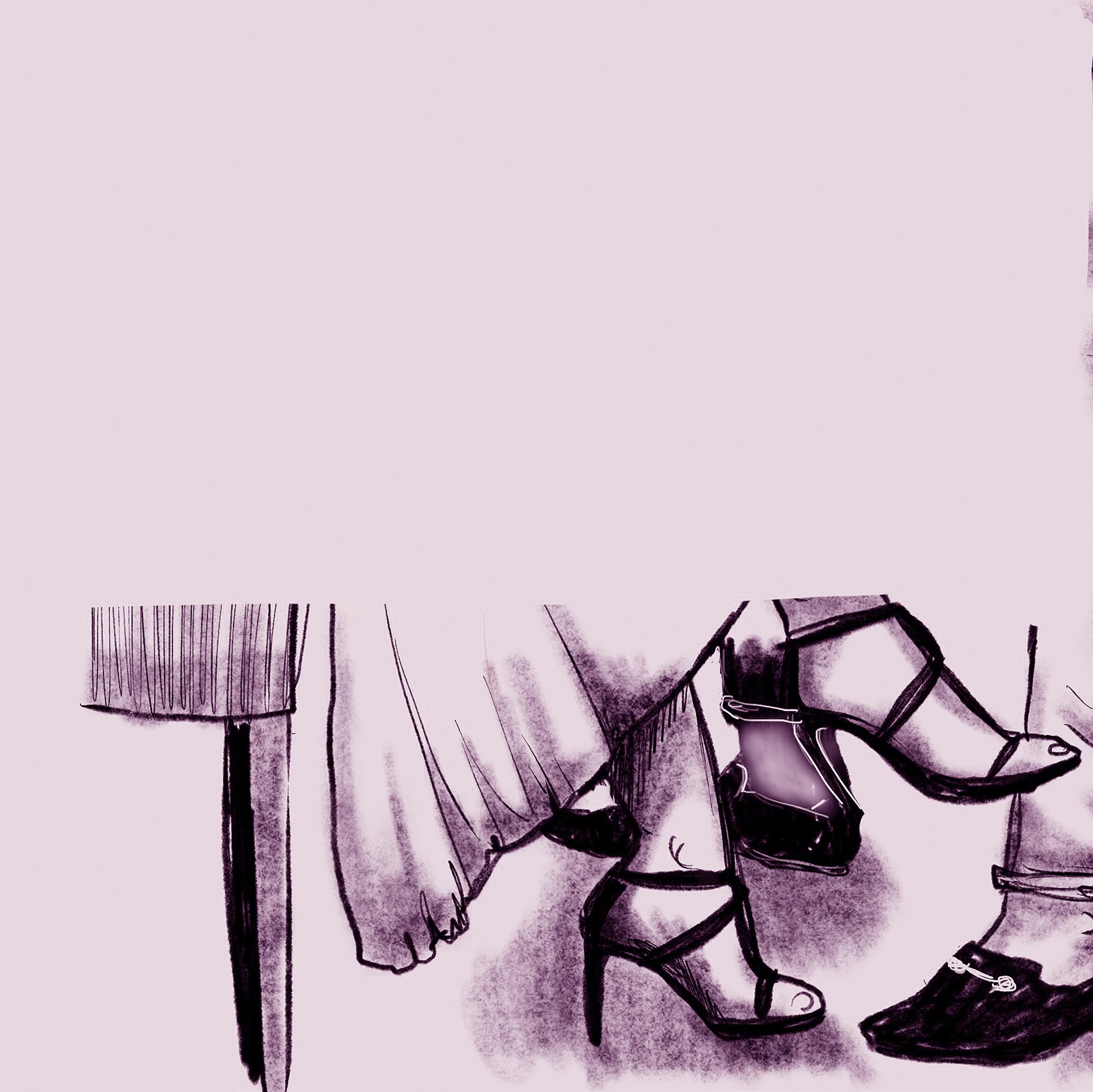
“As long as I’m with you, I’m a happy girl,” she cooed, reaching for his hands. Her smile revealed new veneers, but the expression didn’t match her eyes.
“I like your dress. That new?”
“Yeah. You really like it?”
“Mm. It’s better than the one from earlier.”
“Oh, yeah, I didn’t care much for that one either,” she trailed off, pulling her hands to her lap.
“What do you want to eat?” he asked with his eyes now glued to the menu.
“I don’t know. What is there besides pasta?”
“You know what, I’ll just order for the both of us.”
After three courses and almost two bottles of wine, the man crossed his arms, satisfied. Lizzie made a show of her last bite, shoveling the risotto on her fork and into her mouth.
“I’ll be right back, just going to the ladies’ room,” she stood up and disappeared into the lobby. The restroom had five vacant stalls. She made her way to the furthest one and locked the door. Tying up her hair, she knelt down and lifted the seat. She began to breathe deeply as she gripped the sides of the toilet. Lifting a hand, she put two fingers to the back of her throat. This she continued as fast as she could before someone entered the bathroom. She didn’t know how much time had passed until the three courses and five glasses of wine for dinner lay regurgitated in the toilet.
The door opened, and she scrambled to stand up and sit on the toilet to avoid apprehension. She peered subtly underneath the stall to see who had entered and became horrified to see a pair of men’s dress shoes. In one swift motion, she hugged her legs to her body and sat frozen. He flushed and walked to the sink before she could make her escape.
The bathroom door opened once again, and with it, a familiar voice.
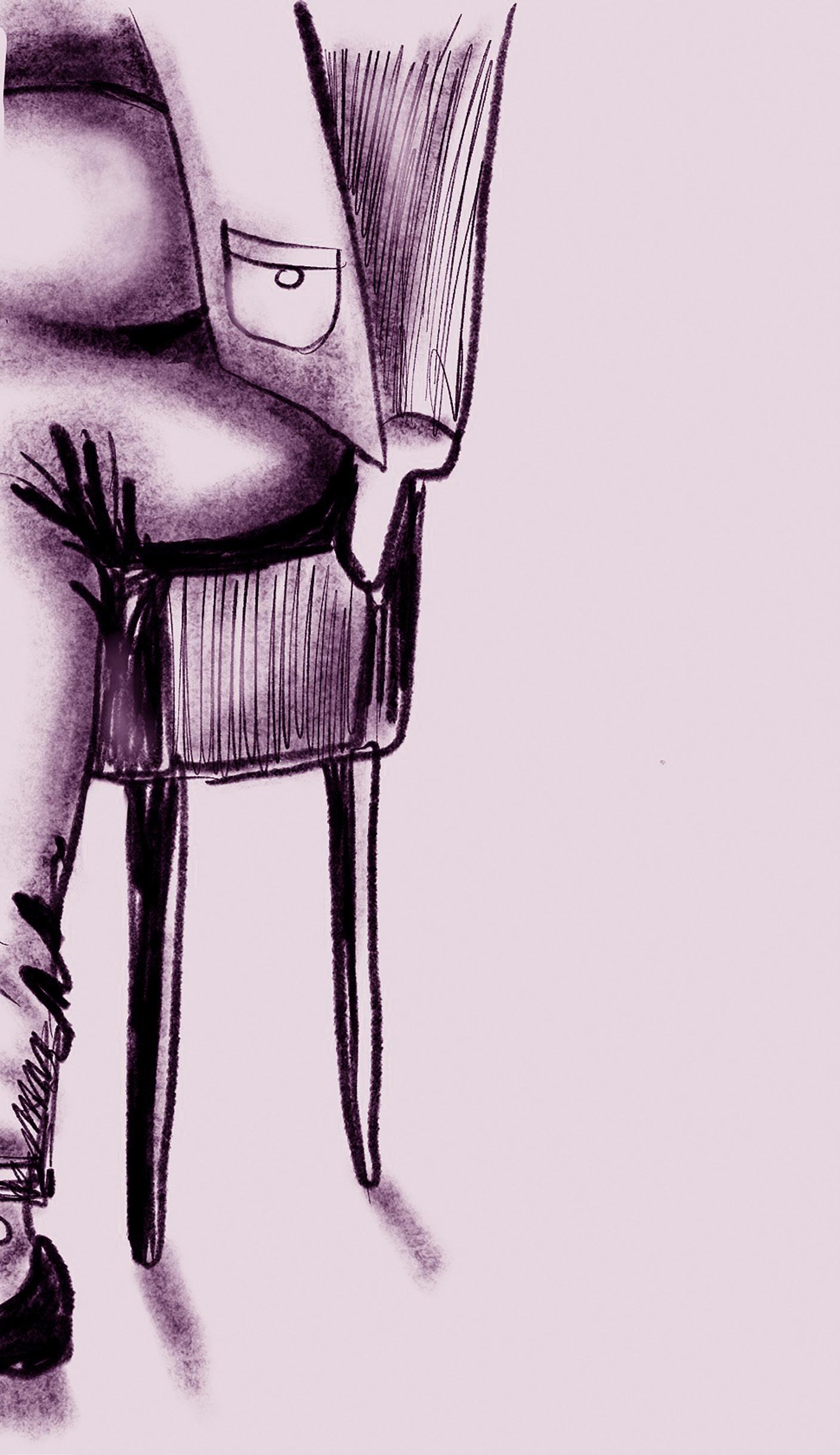
“Howard Christie? No way,” her husband said to the other man that was in the bathroom.
“As I live and breathe! What are you doing here, Doctor?”
“It’s a matter of pleasure. I’m on my honeymoon, actually.”
“Congratulations! They say third time’s the charm,” he slapped the Doctor’s arm.
“And you?”
“Retirement’s going well. I’m on day five. I’m not sure you can relate, you workaholic.”
“Well, it sure feels like I’m headed there what with everything the new Mrs. demands. Piece of work, that one, but you didn’t hear it from me,” he scoffed.
Lizzie had to cover her mouth with both hands to stop her outcry.
“Aren’t they all?” Howard replied.
“Will I see be seeing you for an appointment anytime soon? Susan never updates me about favorite patients,” her husband said as he slapped the other man’s arm as if they were football teammates hyping each other up.
“Next month, I believe. Anyhow, good to see you, Doc, and congrats,” Howard emphasized as he left.
A short pause and her husband followed suit out the door. Lizzie’s feet collapsed on the ground and, full of relief, she exhaled. She busted open her stall door and locked the door to the men’s restroom. Stumbling to the mirror, she took down her hair and shook it around. She lifted the back of her hand to her lips, smearing what was left of her lipstick and vomit across her face. She unlocked the door and sauntered back to the table to join her husband.
“You were gone long,” he said, his eyes fixed to his phone screen.
“Oh, just lady things. You wouldn’t know,” she joked. “They bring dessert yet?”
“I didn’t know you were so —” He looked up at the dishevelment in front of him. “What the hell is on your face?”
“What are you talking about? I just reapplied my lipstick, honey.”
“Wipe. Your fucking. Face,” he shoved his handkerchief into her hand. The heads of those seated near the couple turned, this time for a different reason than hours earlier. She smiled at him, wiping her cheeks and lips with the cloth.
“I guess I’m just a piece of work,” she continued to smile, baiting him.
Silence on his end.
“Did you hear what I said?” she was holding the handkerchief to her face.
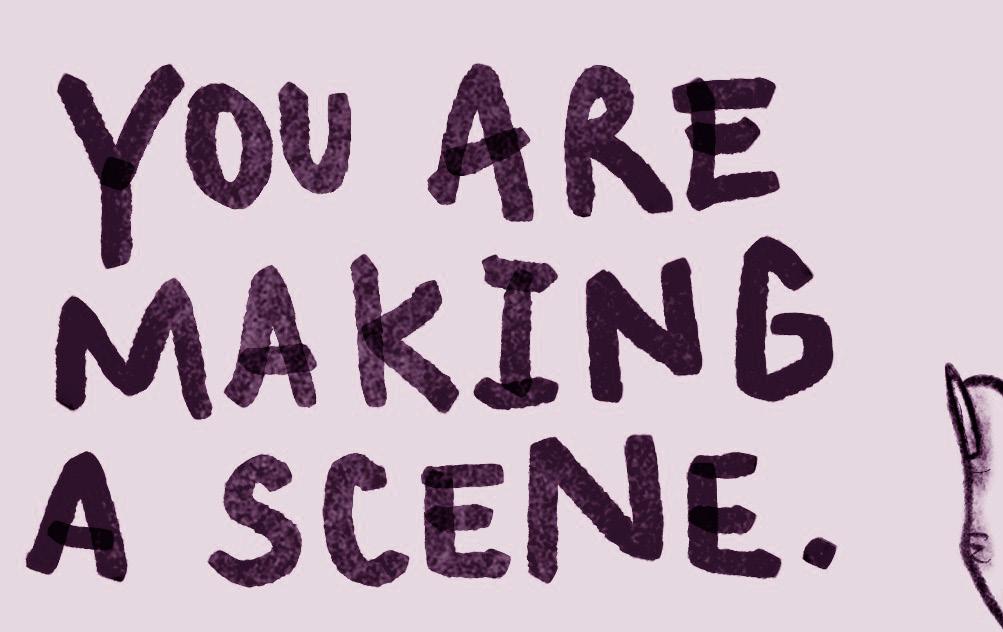
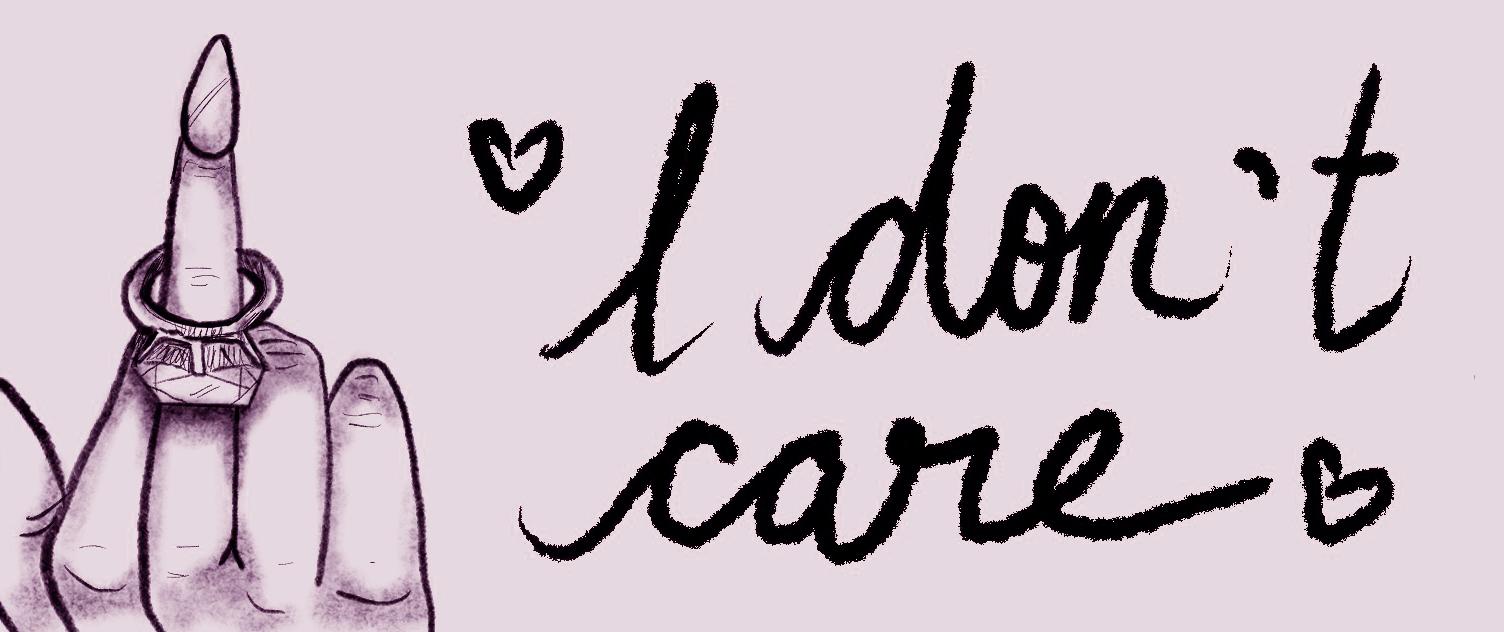
“I don’t know what you’re talking about.”
“You said it.”
“Said what?”
“Never mind. I want to dance.” She stood up and stumbled to the railing at the edge of the restaurant. Throwing her head back, Lizzie began to twirl. She motioned to the mandolin player to accompany her with a song.
“Men grow cold as girls grow old,” she sang to the musician. “And we all lose our charms in the end!”
Her husband stood up and started toward her.
She continued, “But square cut or pear shaped, these rocks don’t lose their shape. Diamonds are a girls’ best friend!”
She hardly finished the verse before her husband grabbed her wrist and held it, scolding her with his eyes like bullets.
“You are making a scene,” he growled at her through clenched teeth.
“I don’t care. I don’t love you,” her smile turned to a tortured grimace. “How does it feel now?”
“How. Does what. Feel,” he managed to say.
“When someone doesn’t give a fuck about you.”
Lizzie pushed him off her. Turning to the tables that had become her audience, she addressed them.
“Ladies, always remember,” she panted, “he’s not worth it.”
And, cueing the stunned mandolin player, Lizzie started to wiggle as if performing an unhinged striptease. Her feet slowly backed away from her husband as she danced. She reached for the ring on her left hand and began twisting it off her finger in a seductive fashion. The ring sparkled from the reflection of the candlelit dinner tables. Not one person in the restaurant could move their eyes from the spectacle in front of them or do anything to stop it.
Lizzie held the ring to her lips and kissed it. She gave it a long look and in one fluid motion, chucked it into the hills of the Tuscan countryside.










